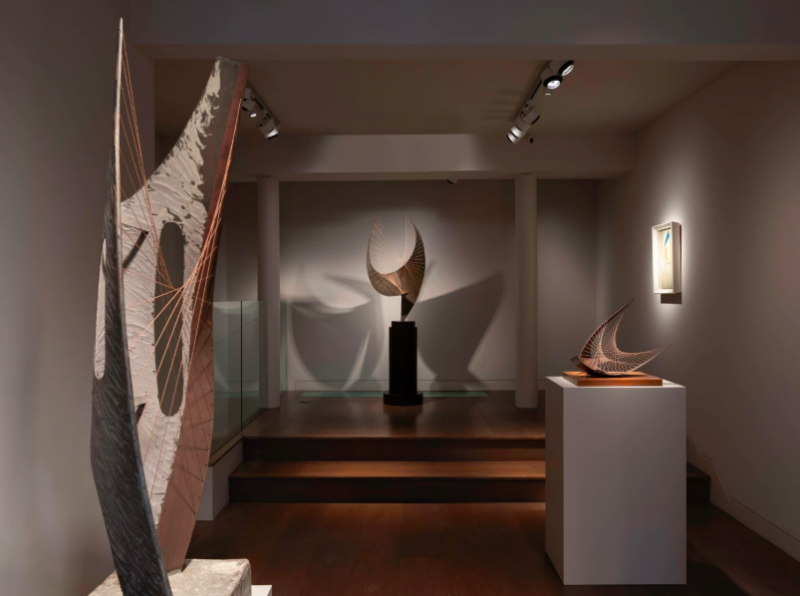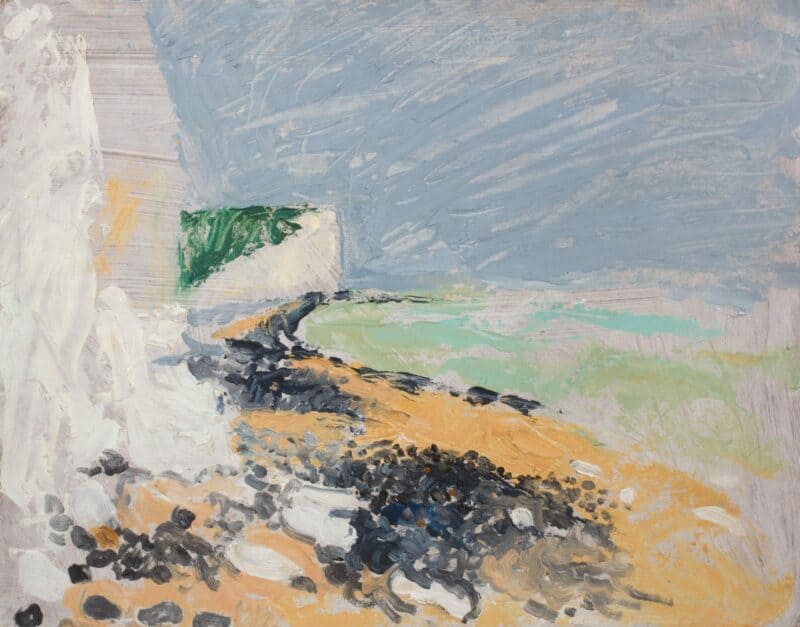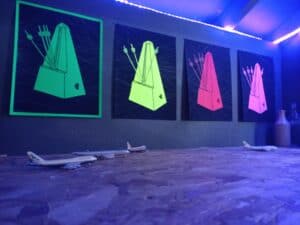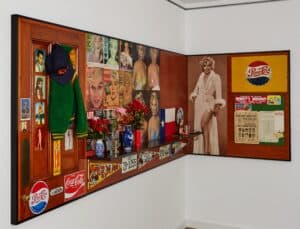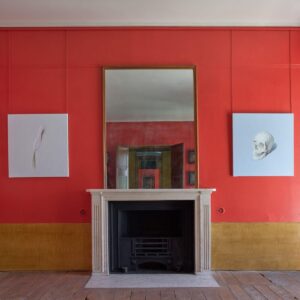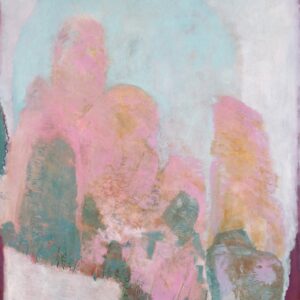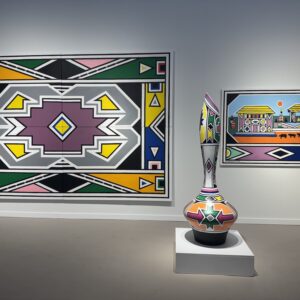The Treasure House Fair is an enjoyable chance to escape the world’s problems. Or is it? Strolling round the 70 stands of art, design and curiosity, I found many items of interest referred to conflict or trouble…
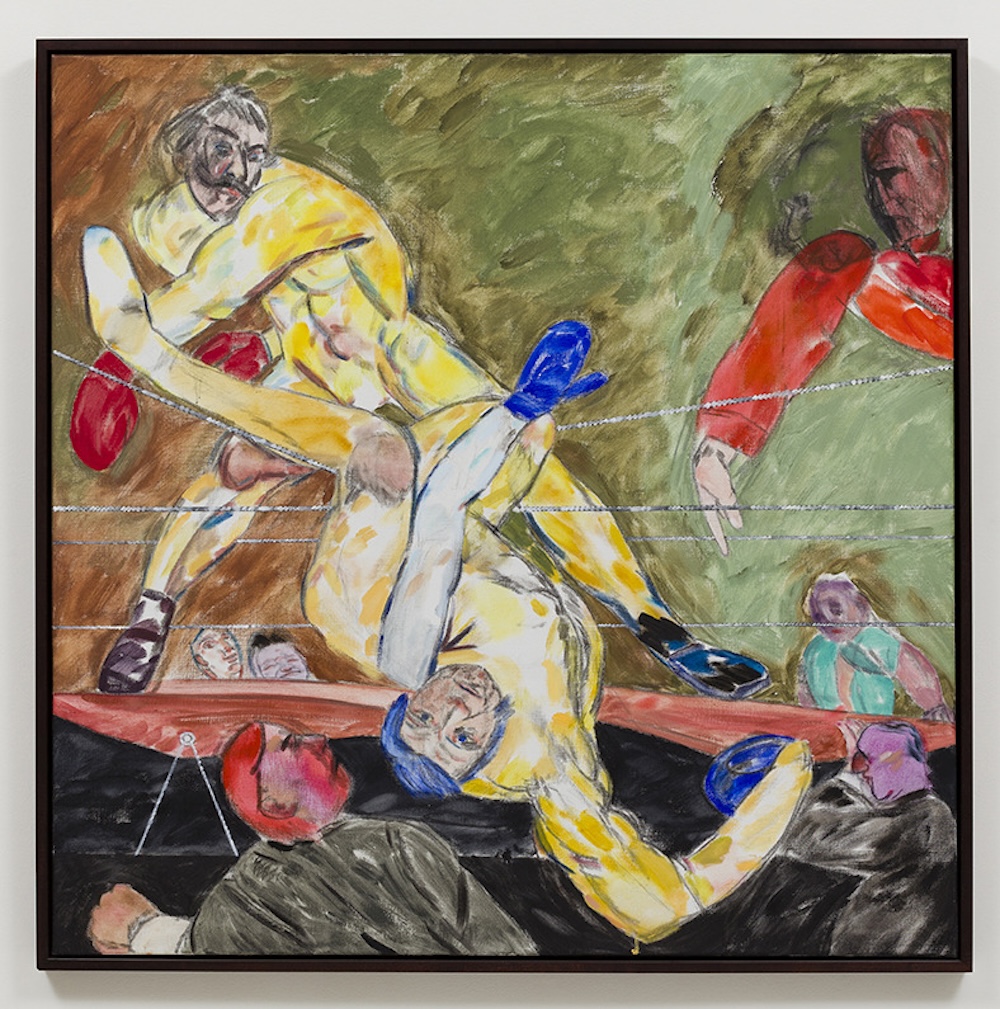
R. B. Kitaj: Whistler vs. Ruskin (Novella in Terre Verte, Yellow and Red), 1992 at Piano Nobile, London
Kitaj is the referee as Whistler knocks Ruskin out of the ring in a large composition based on George Bellows’ well-known 1924 painting of the fight between Dempsey and Firpo. American abroad Kitaj revered the then-unfashionable inter-war artists from his homeland, and followed boxing closely. Dempsey – the one shown falling – got up to win the fight, and though Whistler won his famous and absurd libel trial against Ruskin in 1877, it ruined him financially. Kitaj, who had his own difficulties with critics, also saw the work as being ‘about the way painting may be said to extend its aesthetic reach of punch beyond the sacred plane, into time, historical stream and vivid lineage of bloodline’.
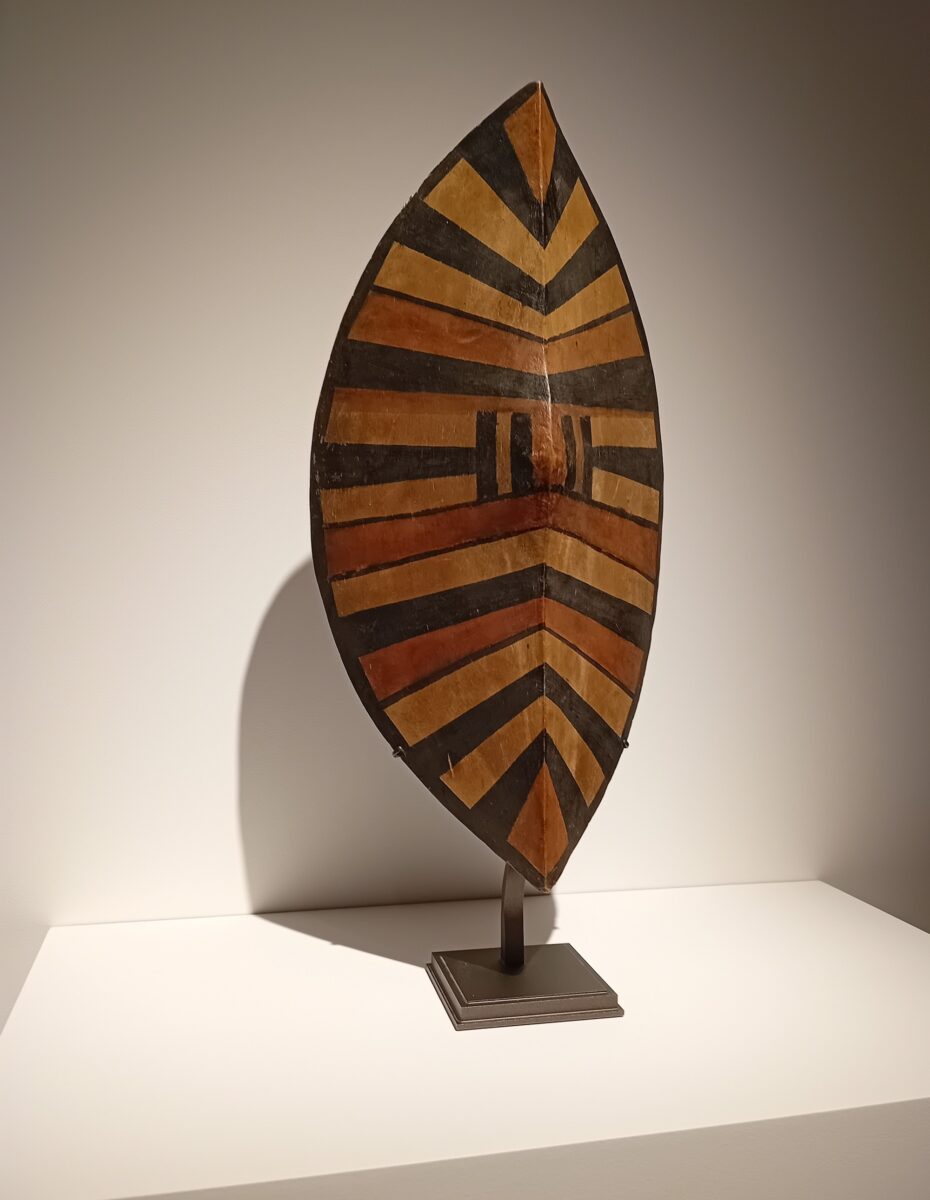
19th century Ugandan shield at Patrick & Ondine Mestdagh, Brussels
This wooden shield struck me as surprisingly small at around 30 cm high – the explanation being that is for parrying rather than blocking, and is light enough to leave the other hand free to attack with ease. Either way it is elegantly painted with a chevron pattern, the two halves angled to form a ridge, and has a conical boss at the centre. The gallery emphasises its rarity: the only other recorded example is in the British Museum.
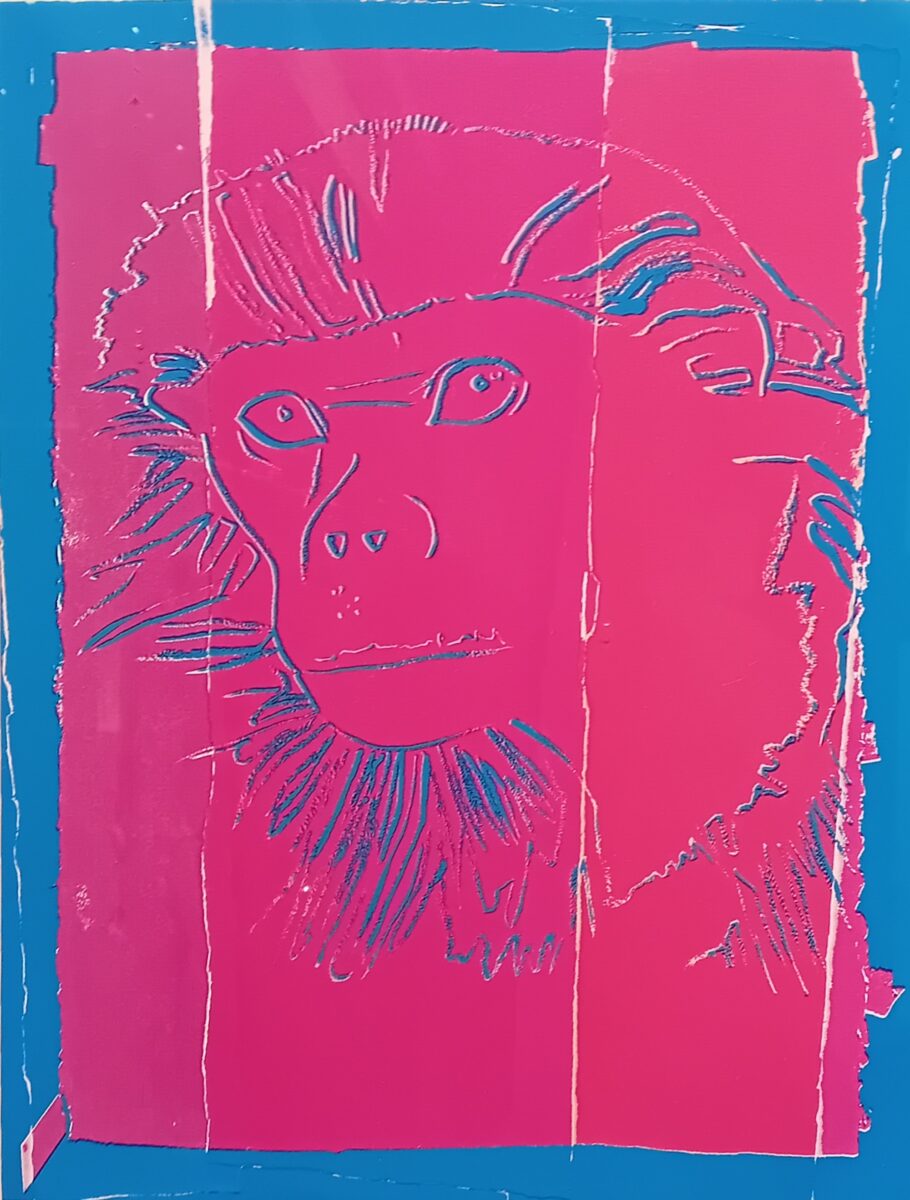
Andy Warhol: Douc Langur (from Vanishing Animals), 1986, at Long-Sharp Gallery, Indianapolis
All three species of douc langur, the most colourful primates in the world, are severely threatened by loss of habitat in their native Indochina. Hence their presence in ‘Vanishing Animals’, the 1986 book by Kurt Benirschke that Warhol illustrated: it has a chapter each on fifteen animals of a lesser-known species that are critically endangered. Here he shows the red-shanked douc (Pygathrix nemaeus) in a unique silkscreen on coloured paper with collage, different from his illustration in the book and the associated edition.
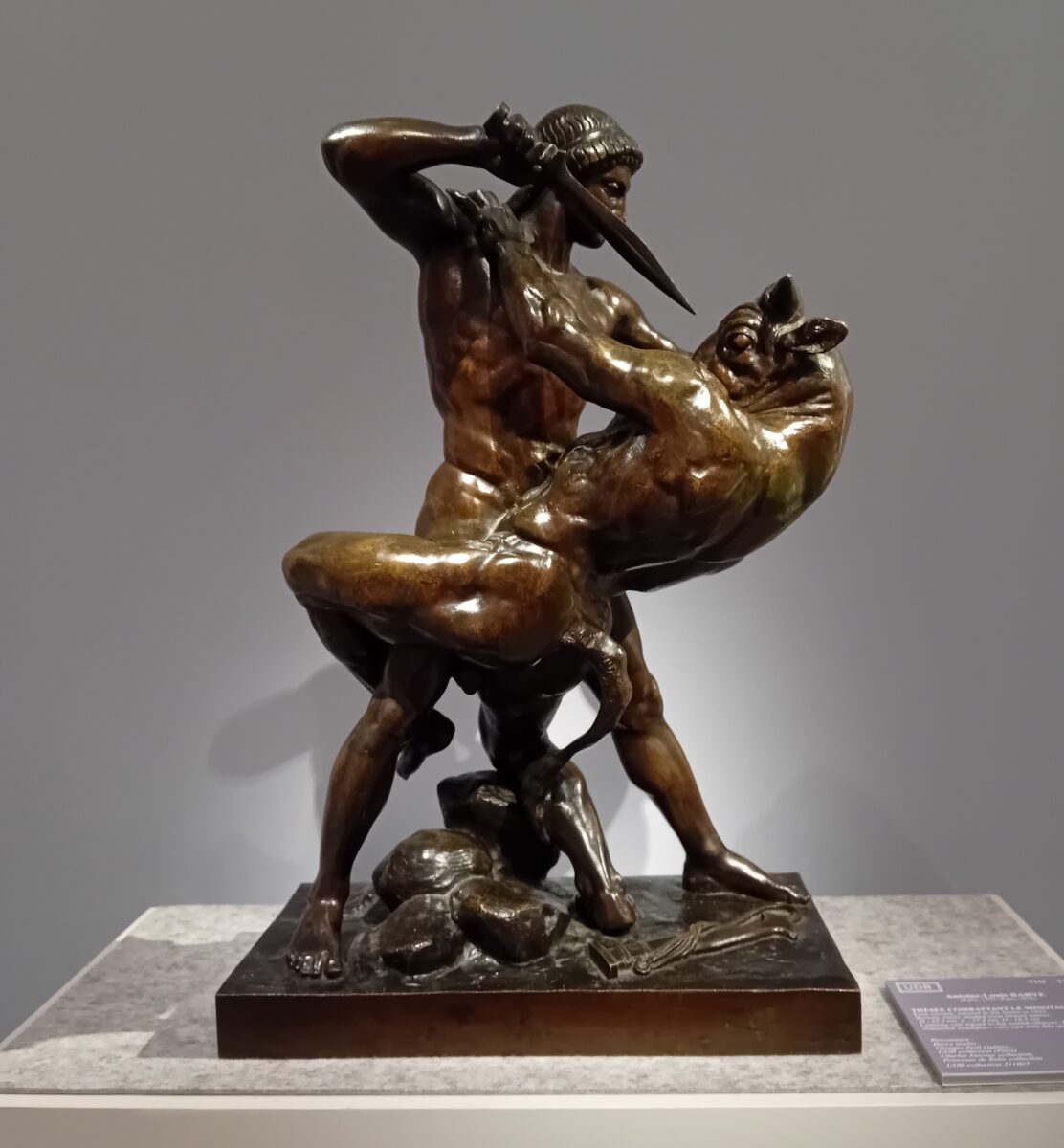
Antoine-Louis Barye: Thésée combattant le Minotaure, 1843, at Univers du Bronze, Paris
This is the first version of what became an iconic representation of Theseus fighting the half-man, half-bull Minotaur – though it was refused at the Salon of 1843. That can be ascribed to the academics in control of the board applying a general policy of turning down any work seen as romantic. Antoine-Louis Barye (1795 –1875) was noted for his skill in sculpting animals: Théophile Gautier called him ‘the Michelangelo of the menagerie’. Here, says the gallery, ‘the intelligence of the game of legs obscures the monstrosity of the Minotaur and directs the attention to the upper part of the sculpture, where the action is concentrated, with the sword and the face to face that opposes Bestiality to Civilization’.
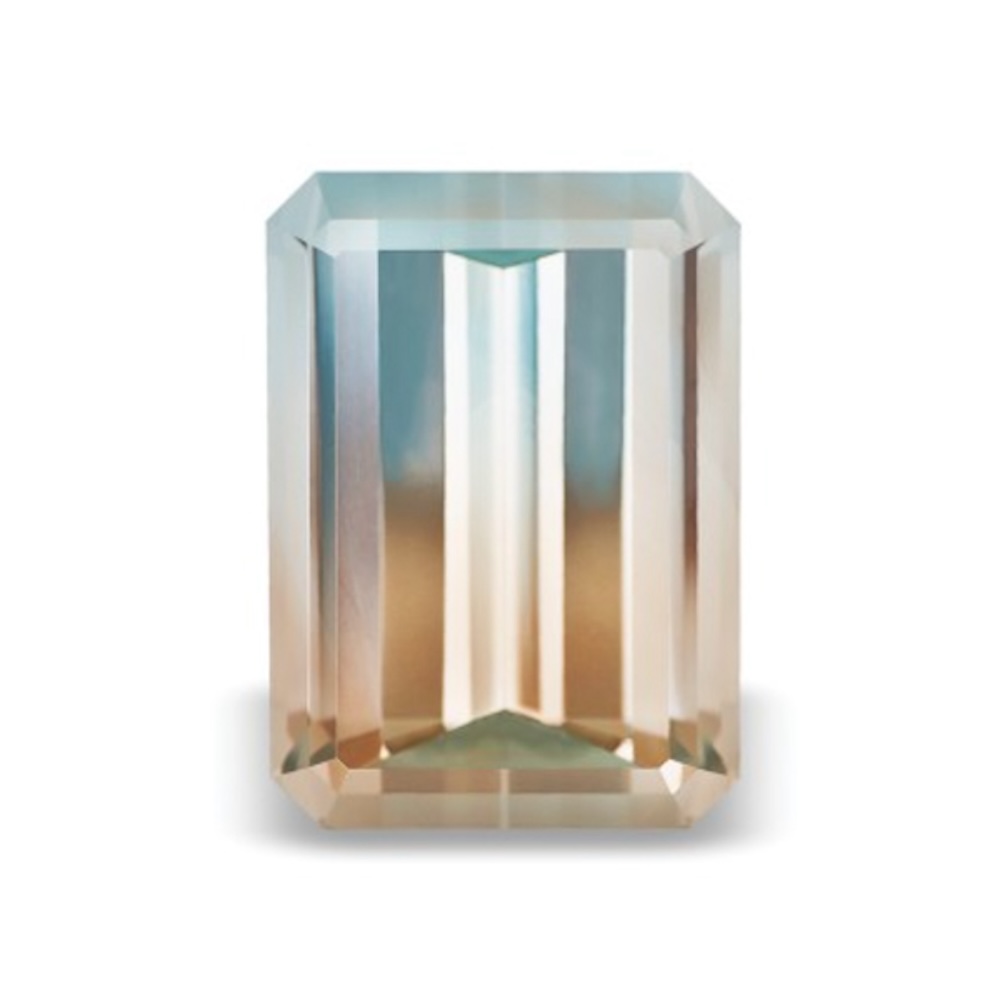
Bi-colour topaz from ‘The Great One Hundred Carat Gems’, curated by Robert Procop
Even the fair’s special exhibition of ultra-bling included a reference to conflict. This recently discovered topaz is known as ‘The Ukranian Flag’: not only was it mined in the Volodarsk-Volynskii Pegmatite Field in Ukraine, it shows a division between two colours – matching the flag’s reference to clear blue skies and golden wheat fields. That was likely caused by changes in the chemicals around the crystal as it grew, with a significant shift as it reached approximately half its final size.
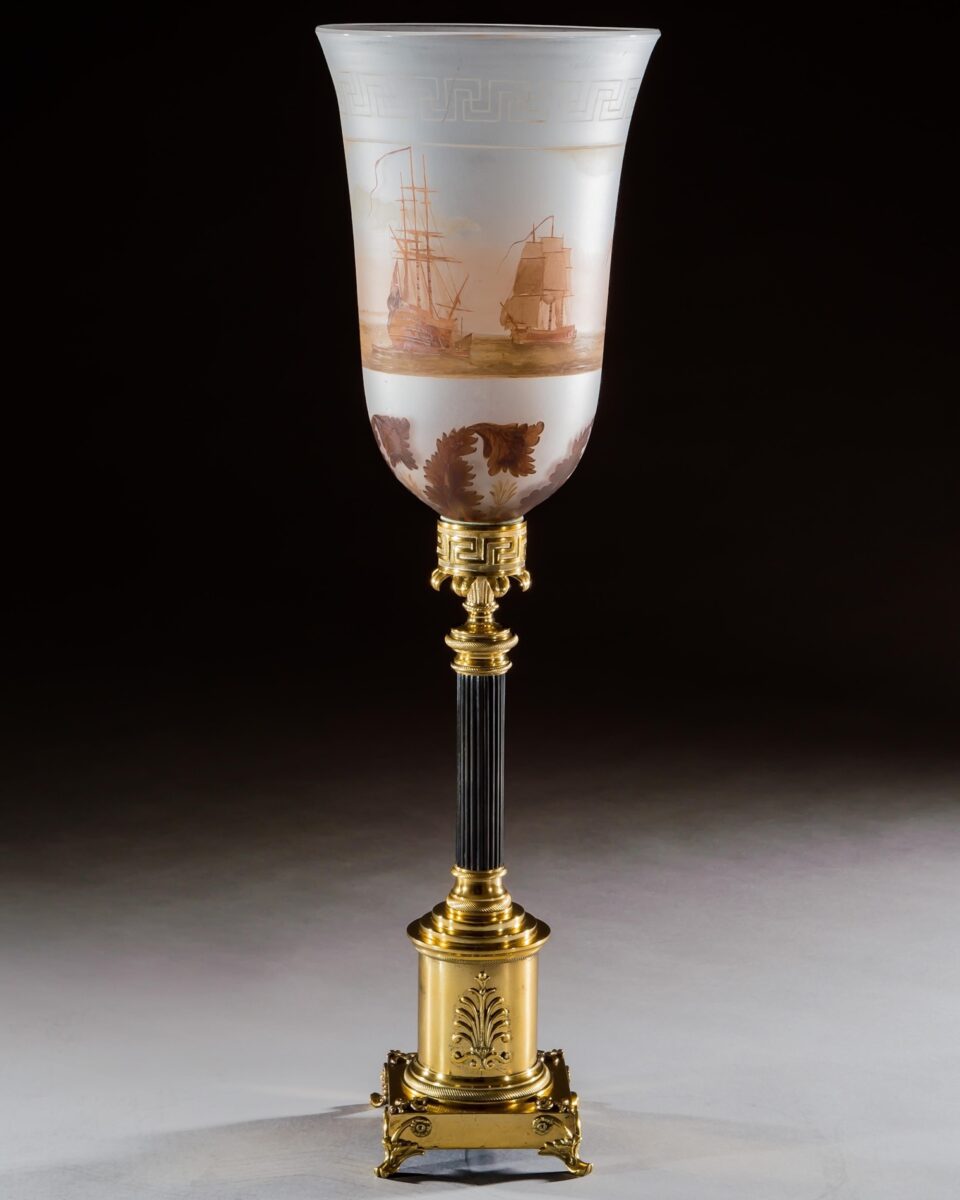
Storm Light, c. 1810, at Fileman Antiques, Brighton
William Collins, the leading painter of glass in his time, decorated the opaque glass shade of this storm light with scenes of HMS Victory and the British fleet after the battle of Trafalgar. The glass is shaped to protect the candle within from the wind: the fragility of the glass, and its vulnerability to hot wax causing it to crack, make such items rare survivals. The glass specialist’s more precise description is ‘gilt lacquered square plinth base with cylindrical drum decorated with central anthemion and knurled socles, issuing a fluted bronze column terminating with a foliated mount with key pattern motif’.
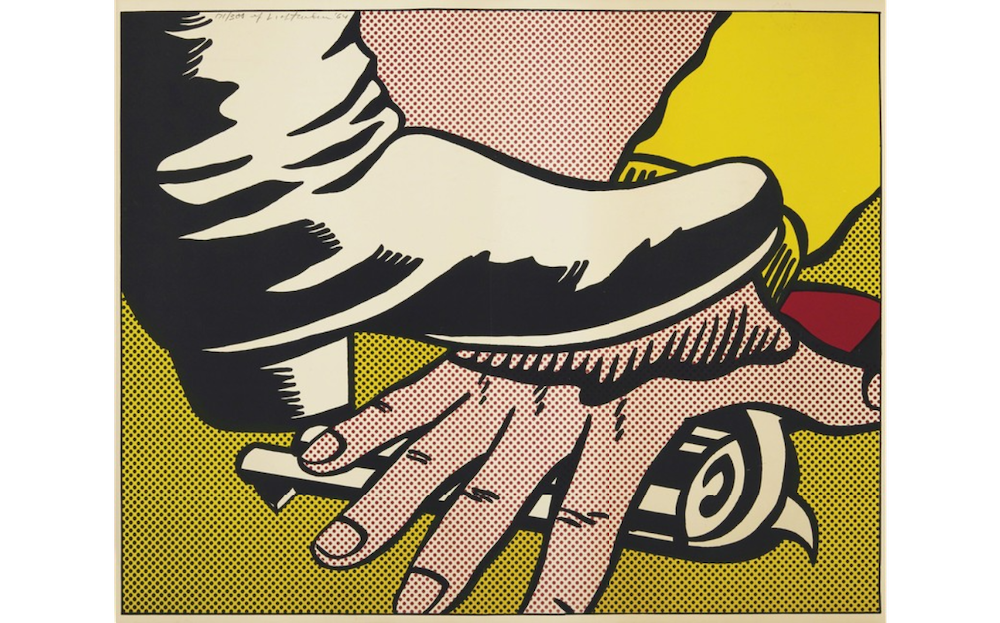
Roy Lichtenstein: Foot and Hand, 1964 at Shapero Modern, London
This offset lithograph, from an edition of 300, is typical of Roy Lichtenstein (1923-97): a Ben-Day-dotted slice of fine art meeting popular culture. The limitation to an isolated comic strip meeting of hand and foot leaves the viewer to supply the narrative context. Stamping on a gun-clutching hand is a trope of many a cinematic fight, but is the boot the goodie’s or the baddie’s?
